I was always very much unlike other kids growing up. Conservative parents led me in all sorts of different directions; in this specific instance, I didn't grow up on the music of my generation.
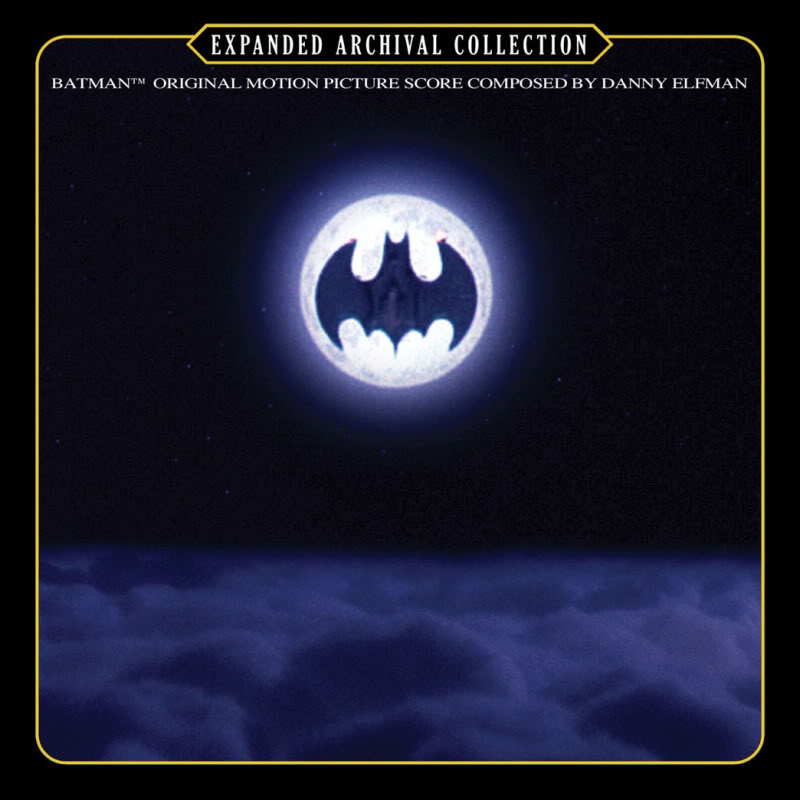 I'm a child of the nineties, who was old-fashioned. I didn't know who the Smashing Pumpkins or No Doubt were. But I sure-as-hell knew who Danny Elfman was. And it wasn't because of Oingo Boingo.
I'm a child of the nineties, who was old-fashioned. I didn't know who the Smashing Pumpkins or No Doubt were. But I sure-as-hell knew who Danny Elfman was. And it wasn't because of Oingo Boingo.
In the days I spent as a lad, especially in the early school years, I was only allowed to listen to the radio on my own if it was an oldies station, so that was my pop music outlet (a restriction I now thank, because of my extensive knowledge of pop music history). However, there was one outlet that was very open to me, as it was two-fold (not that my parents would have restricted it anyway), film and television provided a wide array of music to enjoy; beyond the visuals. Most of my more modern pop music exposure actually comes from films. But film scores, in particular, were a Godsend. My offbeat nature means I appreciated such talent, whereas many other people my age can't stand anything remotely symphonic. Long before school even started, the music of Tim Burton's BATMAN was etched into my very heart and soul. That score is what made me the man I am today emotionally and attitude-wise. It was been a constant underscoring of my life and is never far from my CD/Cassette/mp3 player. I don't think I ever go more than a week without listening to at least a part of it.
But I never obtained the score until I was 12. CDs were luxury items to a poor family, and at 12, I got a CD player and the first thing I asked for' You guessed it: Elfman's BATMAN score. My dad, however, made the mistake of buying me Prince's conceptual album instead (he's dyslexic and only noticed the Batman logo). Not that I didn't appreciate that, though the songs on it that weren't played in the film were an eye-opener (I still can't say I like 'Lemon Crush'). Anyway, this was rectified when I used Christmas money to go to Tower Records and obtain it myself. I had ogled it many times, I was familiar with it: the image of the Batwing against the moon' that image already so iconic in my mind, with the minimalistic text at the top and bottom, silently announcing the title and artist of the album.
And that music has been running into my ears forevermore. Though I had a problem; once I moved into the digital age and I uploaded the music to my iPod, I noticed something through my car speakers; the music wasn't loud enough, and it certainly sounded sort-of flat. I hadn't ripped the music at a low-bitrate, no. I had read somewhere online that Danny wasn't happy with the soundtrack mastering. And with obvious pieces of the score missing, I always hoped for a new release. But in this era of Nolanism and forgotten-Burtonism, how could that happen'
Thank God for La-La-Land Records. That's all I'll say. Let's take a brief overview of this stunning new two-disc release, with my comments on each track. I won't discuss the obvious; you all know the score. Though I'll admit, with how much differs, I find on new listens, I was shocked when the quirks I remembered from the original recording are different! This is a new learning experience, and I'm overjoyed, and I must note: some of the titles of the tracks must reflect the titles Danny quickly came up with for sheet-music notation, and I miss the dynamic titles of the original release. That's why I personally renamed some of them for my iPod. Eternally a fanboy, I suppose; my changed titles are in parenthesis if you decide you like the idea.
The first thing you immediately notice is how much LOUDER the score is, with the soft notes that fade in at the beginning being much easier to hear. Once the track gets going, there is much more verve and fidelity to the sound. The drums beat louder, cut deeper, and the soundspace is fuller. No longer sounding like a cramped studio recording. The width of the musical field stretches out before you. The drumming on the original release is very soft and not as defined.
The first 'two-thirds' (going by the title) of this track were previously unreleased. The music underscores the family's entrance into Crime Alley and attack by Nick and Eddie, going to the mother's screams, Batman's perception of the crime from Gotham Cathedral, and the music about the 'giant bat' and Johnny Gobbs on the roof, just prior to Batman's appearance. The standout moment of the track is finally getting to own that quick little riff when Batman drops down in the background' so overjoyed to finally have that! It's the little moments that make a score worthwhile between the big moments. The final third (the roof fight) is different in the fact that the original soundtrack release included a piano riff that was toward the end' something not heard in the film, and it's not present here. The Linear notes of the CD set note that the score was given all kinds of bizarre, non-film-accurate punch-ups in the mastering. The new set undoes this work.
The terse, grating sound of police corruption presented here is new to the release. Subtle and nuanced, the soft build to the moment when Bob outdoes Eckhardt is so brilliantly underplayed compared to the level of confrontations we see later in the film, from more impressive combatants. What's interesting is that the track ends with a little flourish not heard the film. This won't be the last time we see that on this release.
As you might guess, this is the music for the climb up Carl Grissom's penthouse. That short moment is provided, along with the music starting from Alicia's entrance with her shopping bags to Jack's exit and Grissom's call to police headquarters. Delightfully sinister, like all of Elfman's music for the gangland villainy. It's surprising how subdued the music is to match the subdued villains' its kind-of overlooked in a film about the Joker. Much the same in The Dark Knight, the mob storylines are forgotten amongst the performance of the Clown Prince of Crime.
The entire track is newly released. This music covers the exit of Bruce Wayne from the party (specifically the armory with Vicki and Knox), the reveal of the Batcave, Bruce listening-in to Gordon and the beat cop; fading out to the Axis meet-up of cops outside, which is silent in the film, so the cue moves right to Jack and company checking the office and locating the empty safe. They've been ratted-out; they'd better watch it! This track is where we get the beginning of the highly romanticized variations of the Batman Theme. Beginning with a low, dark French horn sound that speaks of the history and purpose of Wayne Manor, we then move from the manor, behind the mirror and into the Batcave; Elfman then plays the theme a bit wistfully (Bruce longing to act normally again'), as we pan back and the music takes on a somber tone, restating the four-note first-half of his Batman theme repeatedly, stacking it as the orchestra behind it makes us feel pensive with the cutting violin march. Definitely one of the score's highlights' and it's so brief! Little moments, I suppose'
Peviously released but mangled editorially, this is the music for the initial 'Axis Chemicals' portion of the film. For those who may not notice, this entire sequence is scored from beginning to end in the film, and it's a testament to Elfman's prowess that it doesn't become droning like the music for the Nolan Batman films. There's so much variation presented that it never bores, all while keeping a consistent tonality and mechanical/industrial feel for the setting. Beautifully remastered, and it's great to have all of the missing pieces restored to the track. We finish with Naiper's hand rising from the river, leading us to'.
Some of this track is newly released; notably the titular 'transition.' The rest appears to be previously released on the classic score album as 'Kitchen/Surgery/Face-Off,' obviously without the 'Face-Off' (more on that scene later). The transitory music is warm and gentle, though short. We move to Vicki and Bruce's chat at the kitchen table after Alfred leaves, and it's interesting to notice that all of the Wayne Manor scenes use French horns to bespeak a little purpose and grandeur to underscore Wayne and his home. Something I literally never noticed before this article. The Surgery music appears uncut (ha!) as before, though it's easier to hear the 'texture' of it. The flailing piano and the depressing violin notes, held long enough to put us on edge as Jack accepts his destiny. We exit to a symbol clash that, in the film, is accompanied by the Joker's first laugh.
On the original release, we moved from the symbol clash that ends 'Surgery' right into the confrontation between Grissom and the Joker. No longer! Now we have the beginning of a night of lovemaking between Vicki and Bruce, consummated with their first kiss and a violin flourish that quickly turns somber, with the cold prelude-to-a-kill underscoring as Grissom gets out of the shower and mistakes his former right-hand man for 'sugar bumps.' This has the makings of a Spaghetti Western, with rattling hisses and tense violin scoring. We have a symbol clash as Nicholson reveals himself as the Joker'. and the bombastic murder begins! One thing I notice is that the symbol clashes have so much more fidelity than before' it really sounds like they're in the room with me.
Leaving that, we come to my absolute favorite moment of the score, and the moment I've been dying to have. We fade from the kill into Bruce Wayne's bedroom back on the outskirts of Gotham, as Elfman begins to soothe us with a piano rendition of the Batman Theme. Again, invoking the malleability of it, he stacks the notes against themselves, building to a final, complete statement of the theme as, in the film, Vicki awakens to find Bruce hanging upside-down. I suppose I associate the greatness of the music with the greatness of the scene; when the camera shows us the two in bed, Bruce is restless, obviously desiring to go out as Batman but cannot, so he settles for watching over Vicki protectively. Keaton's body language says it all. The romanticism of the Batman mythos is in full-swing on scene and in ear, as Elfman's glorious theme is soft, but still carries its darkly heroic sound.
But we're not done yet! With a rising horn transition, we go back to the Joker in the Grissom penthouse. Elfman uses a xylophone to repeat the 'Face-Off' moment (which is really the Joker's Theme), softly and sadistic-gently, as the Joker notices the newspaper. Dark horns cut in as the Joker decides to begin his competition with Batman' and all of the elements build to a fierce crescendo.
Unchanged from the original release (aside from the quality up-boost, obviously), this track sets the mood for Joker's shock-talk with the shock-schlocked husk of Anthony Rotelli. Not really much to note here. As I said, you guys know the score already (if you don't, what're you doing here').
I thought the original release's title was much better. One word' like Madonna. Anyway, there remains no additional material in this track, but let me point out again how spacious the soundspace is on the new release. The quality is stunning and with headphones, you're taken on a beautiful journey, ending with Vicki analyzing the flowers Bruce left in Crime Alley'
Beginning with chopping piano motifs and crawling strings, this track is slightly extended by an additional middle-portion of almost 20 more seconds. The interplay between the piano and strings give us a nice, sinister feeling. Building tension and paying off with a crescendo as the Joker kills Vinnie Recorso. A new touch I noticed is a rising, bassy Viola riff that climbs in the final seconds before the murder.
Unextended but slightly remixed is an old favorite of mine. Vicki examines the photos she took of Bruce, and then we move into Axis Chemicals as Bob the Goon brings the Joker his photos (Ha! I never noticed the parallel of both Bob and Vicki having photographed in the same sequence). The breezy woodwinds are plenty bizarre' perfect for the Joker. They are given more prominence in the sound mix, leading to a crescendo and Stephen Foster's 'Beautiful Dreamer.' The distinctions between the notes in this segment are made possible by the remastering. Just lovely!
Back to some new material! Previously unreleased, in this track Elfman returns to his Axis motifs and the industrial sound, as the Joker oversees his men manufacturing Smylex on a mass scale for shipping. A brief moment, but essential given its quality! I particularly love the horn riff that blares as the Joker exits scene!
Also new, the title is self-explanatory. Elfman's rapid violin work is shocking for the shocking newspaper headline presented, and then downright sinister for the Joker making-himself-up as a drugged Alicia quizzes him. I love the knocking wood tapping, and the transition which sounds like nothing so much as nails on a chalkboard.
The source cue for the Flugelhiem museum (the classical piece that I'm too lazy to look up) is not included, so this is the next moment of the film Elfman touches with his brilliance. All of the museum material is new to this release. The plucking strings promote Vicki's restlessness in waiting for Bruce (the poor sap didn't even make the plans!), and then there's a distinct, dissonant downturn in the violins that denotes the bizarre package Vicki receives. A nice militaristic drum snare hits us repeatedly as the Joker gasses the museum patrons. The horn section gets frantic as Vicki notices and masks herself. A bombastic procession of horns hit us in rapid-fire as patrons fall repeatedly onscreen, ending with a sudden stop as the Joker throws open the doors. For completeness, cue 'Partyman,' which nicely begins with Nicholson's exact lines upon entry' it'll sound like you're watching the film!
Right into-the-fray as Elfman hits us with wild, high-pitched horns and shrill violins for Alicia's reveal. Vicki backs off and the music begins to sound tame. Underscoring but not overtaking the onscreen interplay between Nicholson and Basinger. Terse pianos and strings keep the tension going. A flute blast hits us. The Joker decides to stop asking about Batman and approach Vicki sexually. The acid flower! The strings sink as Vicki does onscreen, getting bombastic as the Joker is doused with water, and then we hear aural vertigo as the violins nauseate us, stopping suddenly with a small horn blast and the Joker's 'Boo!'
Something shattered overhead! Batman gives us the best entrance in superhero cinema to rapid, dark horns that were previously unreleased! The skylight crash is presented for the first time on CD, and it is phenomenal! What's impressive is the sense of danger Elfman alone provides, to say nothing of it paired with the visuals. Batman and Vicki slide off on the Steel Gauntlet toward the doors with a full-bloodied, breathless rendition of the Batman Theme, accompanied by flute-work that is sublime. The horns blare upon Batman's contact with the doors, and then we have a moment of semi-silent ambiance as the Joker muses about Bats' tech. A barely-discernable shift in audio quality later, and now we're in the original soundtrack release of 'Batman to the Rescue.'
I've always loved the 'plucking' on the instruments as the Batmobile readies to take-off. I've also always loved and noticed the flute-work in this track. They're very effective in playing the Batman Theme light and flighty. It's also a little shocking to really take this track apart, because you begin to notice such complex composition. It's a wonder that Elfman was still sane after plotting this all out. The intricate interplay of all the instruments and all the variation is enough to write a book on in itself! The title is also kind-of misleading, as the fight takes place in an alley, not on the street. Oh well. We exit after Batman takes out the batshit-crazy swordsman, followed by a quick notation as Batman challenges Bob, who takes off, smartly.
Also smartly, the title of this track remains unchanged between releases. Because 'Batmobile through Forest' just wouldn't have the same impact, you know' Anyway, what can be said about this unbelievable track that hasn't already' Not much I can add, except to note how different the mix is on this release. The linear notes say that the original release played-up the choir more than in the film composition, and that's certainly true. For those more familiar with the original release, the relative lack of the choir will shock you, but fear not. This only allows you to better here the rest of the orchestra! And it's at this point that I notice the linear notes are actually overviewing the soundtrack in the exact same way I am, just with more impressive musical terms. Damn. But I'm bringing a different perspective to it, so there! My self-realizations end as the Batmobile enters the Batcave.
I added 'the' to the title! Very important! This track is again unchanged from the original release, at least for the portions between Vicki and Batman in the cave. The new material comes in as we get the brief, albeit excellent moment where a Gotham Globe truck pulls up to the Crime Alley newsstand and delivers the bundle of papers declaring 'Batman cracks Joker's poison code!' The high flutes here and quick stringwork (again with that awesome 'plucking!') excite, and we have a nice, dark moment of the Batman Theme as we exit scene and see the headline. Batman does it again!
Unchanged from the previous release. Creepy and twinkly, the Joker leaves Vicki's apartment with a flourish, and we end on Vicki's shocked discovery of the box's contents. Though the new release still doesn't sound quite like the film mix on that moment. Both releases have a six-note finale, whereas the film quite clearly has a four-note finisher. You know what I'm talking about. The long first note, and then the rapid three-notes as Vicki faints. Very interesting.
Newly released, this music underscores the moment in which Knox reveals to Vicki (and the audience) Bruce's tragic past. It's very brief (thirty-eight seconds!), but very sweet and perfectly heart-tugging. If there were any sound that could capture a woman's sympathy' I think Danny caught it right here.
Here, as you might expect, is Bruce's flashback to the night of his parents' murder. This portion remains unchanged, and I've always loved just how unsettling the entire track is. My favorite moment of the track is the dissonant, horror movie-esqe bit when the choir turns their voices inward (if that makes sense) and it turns down into a dark place when the Waynes turn around to face their killer. I'm not sure where the 'Challenge' part of the track comes in' perhaps it's meant to be Naiper's question to Bruce about the Moonlight-Devil-Dancing. This portion is only slightly changed, mostly with just an additional percussive beat or two. We fade from this moment with Bruce's memory back to the Batcave and the confrontation between Vicki and Bruce. The original release (called 'Love Theme') always sounded like the two tracks belonged together anyway' there's a clear continuity between the two and were practically gapless. This portion is also unchanged, though I wish to note just how well Danny uses Prince's melody for 'Scandalous.' While I find the song itself shrill-yet-oddly nostalgic (its somberity aside), Elfman's able to weave it into a very effective love theme.
The vibrancy of the new master helps an already-great track shine even brighter. The gentle piano statements, offset by the string accompaniment seem to be slightly juxtaposed. It's almost as if the piano is the cold-but-caring rational of Bruce, while the strings are Vicki's longing and worry for him. There's a great moment when the two sides play in tandem, melding the characters together. But the low frequency ending underscores Bruce's shirking of his salvation, and embracement of the darkness within'
From this point on, you'll notice there's less and less new material presented, because as Elfman said on the special edition DVD of the film' he was able to pack his biggest punch into the last act of the movie, and obviously, Warner Bros. was going to opt to ignore more scenes from the first half of the movie than the second half (the action half). In this track, Batman gets dressed in one of the most iconic moments in superhero cinema. He then sends the Batmobile on a mission of vengeance to destroy Axis Chemicals and stop the Joker's Smylex production (the titular 'charge'). One thing I'd like to note that I always found funny about the original soundtrack release is that once we get to the middle point (the quiet once the shielded Batmobile drops the bombs), you can hear a phone ring in the background while the orchestra stops. Try finding it with headphones if your CD player isn't loud enough. This is still present despite the remastering! Although now it sounds like it could be part of the orchestra, but doubtful. It's probably Jon Peters' cell phone.
This piece is iconically bombastic and since the setting is Axis, Danny takes that chance to gives us the Batman Theme elements layered with that industrial sensibility he's brought to the setting throughout the film. Once the Batmobile sets off the bombs and drives to escape, the score sounds very similar, I think, to Elliot Goldenthal's theme for Batman Forever. Perhaps this is the moment that inspired him' The receding violins as the Batmobile exits to Batman's side is a glorious, understate touch, and the perfect way to lend ambiance to the moment's end.
This track contains a whole piece of music that was not used the film! I suppose this music was supposed to track over the Joker's flight away from Batman at Axis, but the editing of the film must have caused its dismissal, as it seems too short to fit in, unless it was meant to underscore the Joker's talking to Batman. It's quick but it's menacing and I love the way it vividly paints a thousand-yard-stare between the two hated enemies. The second half of this track is another one of those iconic musical moments we love from the film. The Batwing soars into frame as a complete surprise (unless you followed the press prior to the film's release); proving Batman always has another trick up his sleeve (something the franchise would continue to copy, vehicularly, save Batman Begins). I was jazzed to get this track too! The militaristic snare drumming reinforces Batman's badassery, and again we exit with receding waves of music, just like with the Batmobile on the track before.
Wow. Imaginative track name. Now do you understand why I renamed' As I said, the simplicity of the title leads me to believe this was the hastily-given title given by Danny for sheet music notation. This piece is expanded in many ways, albeit briefly. Mostly, little moments are restored. On the original release, several moments were just snipped out of the middle to save time (I suppose compression technology for audio CDs have come a long way). Originally, many of the smaller moments or less action-y bits were trimmed. The entirety of what you hear in the film is back in. The standout moment of restoration comes with the moment when Batman releases the balloons from the Batwing's frontal capture claw over the ocean.
In terms of the composition, again, this is a film sequence that is scored from beginning-to-end, and Danny's flair for complex instrumentation and variation keeps it lively the entire time. A straight six minutes! My favorite moment of the track is probably right as Batman begins to open fire on the Joker's equipment and the villain himself. We get a very dark series of statements of the Batman Theme. The first four note half stated again and again, and then wrapped up with the nine-note resolution as the Batwing fires on the Joker himself' and misses! The music gives us another representation of the thousand-yard-stare as Batman stares, daring the Joker to fire his pistol. And the Joker's just crazy enough to do it.
A series of descending bell-clashes and tight drumming, followed by a rising crescendo and horn blare sees the Batwing to the ruined steps of the Gotham Cathedral. Fiery shrapnel falls in silence as we move to'
I love the new title, but the original just sounds so much more romantic and mysterious to me. So the choice is obvious. This track was something of the centerpiece of the previous release, and as such was uncut. Nothing new added here, though there are some very slight changes in the mix. But let me describe the track itself as an odyssey.
Beginning with Vicki's frantic search of the Batwing wreckage (in which Batman has mysteriously disappeared), to the Joker taking her hostage, to Batman entrance into the Cathedral, it's all powerful stuff. I'd say that this is the truest piece on the album for most variety. We're underscored this whole time by the common motifs previously established; there is very much a Bernard Herrmann edge here, and is perhaps Elfman's homage to his idol. Lots of effective use of Pipe Organ; I think this track may just define the sound for the film's score the best. This track is very, very gothic, more than dark specifically. This is probably my most favorite orchestrated piece of music ever composed, and is an absolute contender for one of the best of all time, its film connection be damned. This is just as powerful and stirring as anything composed by the greats, if you ask me. It's twice as powerful on its own as it is in the film.
The defiant, single horn captures Batman perfectly, the twinkling notes underscore the Joker's trickery, and the interlude which finds the police arriving gives us a slight-enough break from the action for Elfman to bring the chase back with a punch. There's also an errant romanticism paid to the Belltower specifically, as it represents a haven after the perilous, tiring climb up the stairway. This track also captures what's so inherently Batman about the setting, too. It's so gothic and unsettling. Hollow and haunting, Gotham Cathedral is very 'Hitchcockian' and classical. No random comic book movie would think to have such a setting for a final battle, nor that would the final battle be so subdued.
It's interesting that the Batwing confrontation is so much more classically a superhero movie final battle, but we go on to have something so much more gothic, operatic and subdued compared to it. This is no villain lair. Nor is it refined. Neither the Batman nor the Joker are in their element (well, Batman kind of is, I suppose), so the battleground is even. Especially the final confrontation being so inverted, as I'll get to in a minute. We come to some beautifully descending strings as Commissioner Gordon orders searchlights up onto the tower. Horns rage as the lights go up'. and low frequency as Batman finally peeks through the trapdoor into the Belltower. He climbs in, preparing himself for the assault to come'
Out of nowhere, Batman is attacked by a thug with spiked boots. After Batman takes him out, Elfman shifts from the action-packed to the darkly joyous. The titular Waltz is intercut most effectively with powerful horns as our hero fights hidden hordes of henchmen, and then back to soft strings for the Joker's moonlit dance with Vicki. Hey, she's actually dancing with the Devil in the Pale Moonlight. How about that! After Batman dispatches the main thug, we're treated to a pure Waltz, which slides down to a dark finish as Vicki escapes the Joker with some flattery.
The last of the new material in this first half! The dark, percussive piece is powered by low notes on the piano and sinister horns representing perhaps the gut-churning hate-turned-satisfaction as Bruce finally gets to avenge his parents' murders! The first three notes of the Batman Theme serve as a stacking motif, building to the Joker's dispatchment over the parapet' or so we think. I truly love this piece, as I always found the power of the scene to be so very defined by the music. As I observed, Elfman captures that love/hate sense that Bruce feels as he gets to finally torture the man who took his life from him.
Remember what I said earlier about the final confrontation being so inverted' Well, here it is. After Batman proves he would hit four-eyed villains, we're led to a climax of horns, held steady in the aftermath by soft, barely-perceptible strings as Batman and Vicki look over the edge'. and then we have another horror-movie-moment from Elfman as, up from the edge comes the impossibly-surviving Joker, who pulls our heroes over the edge into a shocking moment of silence (in the film punctuated perfectly by the Joker's laughter). We have another tiny audio quality (read: source) shift, and then we're into the original soundtrack release's 'The Final Confrontation.'
Vivid harps lead us into the scene and our heroes out of sure-confusion as we see their predicament. The Joker stands above them on the Cathedral parapet, as they hang onto the edge for dear life! Terse instrumentation punctuates the moment, giving us tension even without the visuals. A touch of Pipe Organ, and then Vicki takes the bait, falling for a fake hand. Elfman reuses his pounding piano motifs repeatedly to build palpable menace. This confrontation is so wonderfully different from most superhero movie endings, because not only is the location so totally unique and different, but it's very personal, and the villain absolutely has the upper hand. Batman is weak from his ordeal in the Batwing and the fights he's just had, while the Joker is relatively unscathed. The sequence is just the hero, the damsel, the villain and a thousand feet of air below them. I believe this scene gave me my fear of heights. As I said before, this final battle is like something Hitchcock would have done. It's so operatic and so big in scale, without being big in scale; if that makes any sense.
As the Joker's helicopter arrives the music heightens and the tension increases, lending us urgency. Batman's not going to get another chance at his parents' killer, and if he's going to fall to his death, damn it, the Joker's not getting away either. Underscored by his theme, Batman pulls out a bola launches and fires, tethering the villain to a nearby gargoyle. The music switches to a flighty, flute-led moment that captures the heights that the three find themselves at. The music crescendos as the gargoyle unexpectedly breaks loose. Danny captures the Joker's desperation, now, as he captures the peril and with each slip of the Joker's fingers, we come closer to the end. A moment of calm' and then the Joker falls in a musical sense of finality.
A moment of calm for our heroes as they try to pull themselves up' and then down they go as well! We're frantic and doomed, until Batman secures a grappling hook'. And then the romantic tenderness returns as our heroes are saved, and they share a relieved kiss.
But what of the Joker' Moving back to view his corpse, Danny reprises a music-box rendition of 'Beautiful Dreamer,' punctuated by bizarre, unsettling flute movements, leaving us with a feeling of disgust, in addition to the broken body of the villain! You almost feel sorry for him. Almost'
Another track that speaks for itself. It's so powerful a piece of music that it was used to heighten the visuals of the Schumacher Batman films in their trailers. And it did help, if you ask me. Anyway, at a glance, the piece is so classically romantic. The moment in which the Bat Signal is revealed is boldly heroic and powerful, but in contrast, the moment immediately afterward when Vicki is wandering away from the ceremony, aimless and lost in thought, is one of my favorite moments in the entire score. It's so old-world, so classical and right out of the films of the 40s'. it feels like it could have been a part of the score for Casablanca. Anyway, to keep from gushing too much, I'll just remind you that the track speaks for itself. The very end mixes both 'Beautiful Dreamer' and 'Scandalous' along with an unusually optimistic statement of the Batman Theme, to flawless effect. But the very, very last moment, when Danny takes us back down into the dark version of that theme reminds us that the peace in Gotham is only temporary'
Wrapping up the main score, we have a bold, action-y restatement of the titular theme for the first half of the end credits, which is followed by Prince's 'Scandalous.' Effective, dark and exciting, Danny ended things well, but would you be surprised' You shouldn't be!
**Disc 2 Overview**
Disc two is a remastered re-release of the original score album. Incomplete as you remember it. I suppose it was included because of the variances in mixing, and archival purposes. I'll tell you one thing; it's much better sounding than it was originally.
There is new material on it, though, and I'll quickly go over it.
It's what you'd expect! Not much to say beyond that, but this is the theme song for Action News, and it's great that it's included, for completeness.
Bright and bubbly, the title perfectly explains what you get here. It's amazing (or perhaps not) that so much care was given to this little slice of the movie. But Elfman did say he had more fun composing for the Joker, and he wasn't able to do it as much as he wanted, so I'm sure he relished the chance to score this moment.
This is an unused track, and according to the linear notes, was meant for playing on the Joker's boombox during the Vicki's Apartment scene, but was replaced by 'Beautiful Dreamer.' It is perhaps a little too downbeat and somber, whereas the used track is very dreamy and carries a sense of foolishness perfect for the character.
This is the Batman Theme, as you might expect. But the linear notes describe it perfectly as 'wet' and 'heavy' in the bass. And it's the truth. What's interesting is that this is the version you'll usually hear a re-recording of the theme sound like. Was this how it was originally composed and it was changed in the recording studio by Danny/Steve Bartek/Shirley Walker into the one we know' Or is it coincidence that this version is the one that gets reperformed'
What's different here is that 'Beautiful Dreamer' is played very differently. It's much slower with a bigger focus on strings playing it than the twinkly xylophone as in the film/soundtrack versions.
This is the 'crash through the skylight' bit with a totally different sound for the exit from the museum. It's kind of hard to describe, except to say that it's a tad more supernatural/ghostly sounding. Sounds a bit like Elliot Goldenthal's Batman music' again! And it's notable that the altered ending was used in the UK 'Making of BATMAN' TV special as its theme!
A very superfluous inclusion, since even the linear notes admit that its only change is inaudible during the film due to the Axis goons' gunshots. Basically, some percussion is added in the break between things as the bombs are dropped by the Batmobile, before the escape sequence.
Just a different mixing, which features extensive piano toward the end. Very odd to hear, I must say! And then, some kind of unusual reprisal of 'Beautiful Dreamer' attached afterword (with no mention on the CD or in the notes!) that features what must be the cast/crew playing 'choir' alongside the orchestra! It ends with a twinkling xylophone rendition of 'Waltz to the Death.' Wow.
In Conclusion
Wow. What an exploratory odyssey this article has been! It is undoubtedly my longest yet! I want to thank the cast and crew of the film, especially Tim Burton, Michael Keaton, Jack Nicholson and obviously Danny Elfman, for crafting a film that captured my imagination and made me a Batman fan. Also the crew at La-La-Land Records for going the extra mile and doing this! Without them, we'd be stuck with that inferior release forever! And lastly (but not leastly) Paul for allowing me to wax poetically about this excellent music all over his website, undoubtedly sucking up bandwidth with the insane length of this thing! His site is a treasure, and the best Bat-site on the web!
You can read more of Flynn's thoughts on his blog Blathering Blatherskite
BATMAN (1989): LIMITED EDITION: 2 CD-SET (Expanded Archival Collection) is available from La-La-Land Records . Limited Edition of 5000 Units. Released on July 27th 2010
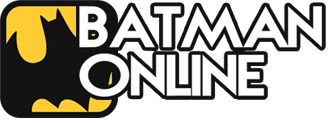
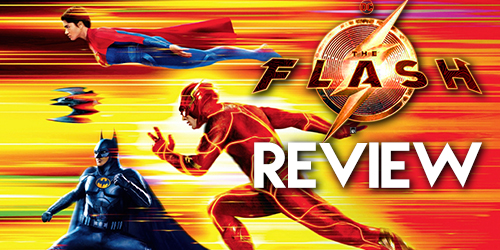
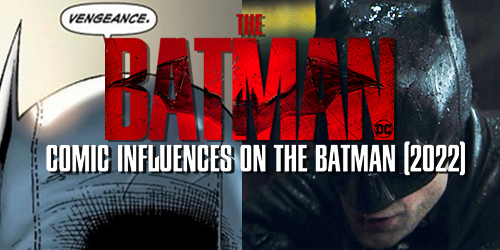
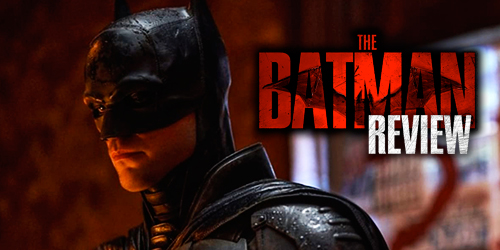

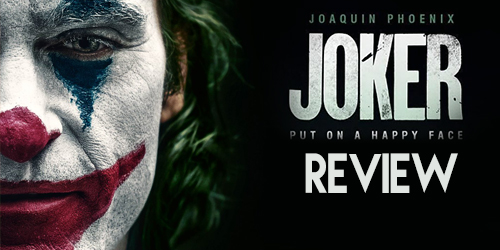
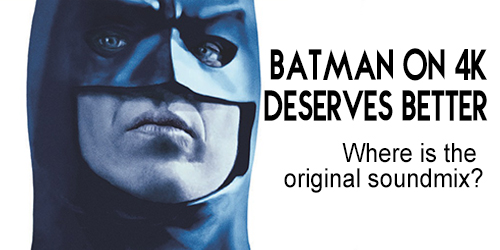
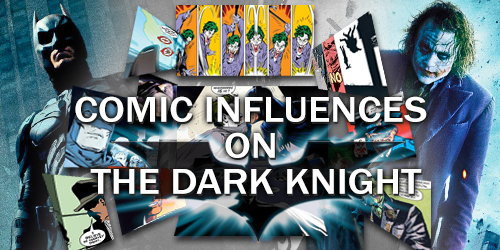

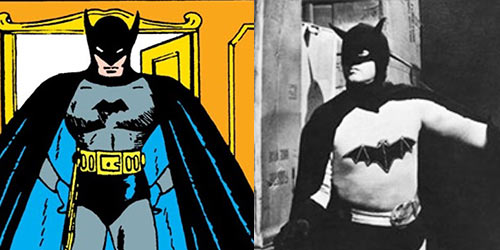
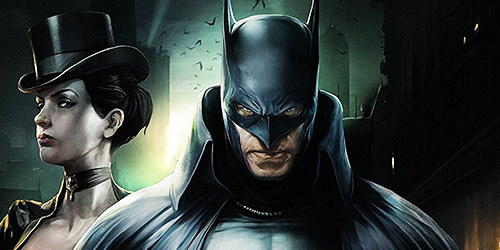
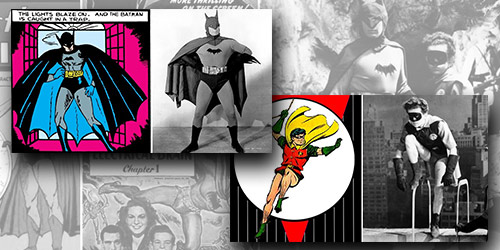
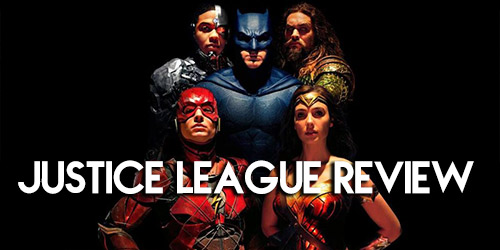
by thecolorsblend
by thecolorsblend
by thecolorsblend
by The Dark Knight
by Silver Nemesis
by The Joker
by batz1989
by The Dark Knight
by thecolorsblend
by Silver Nemesis